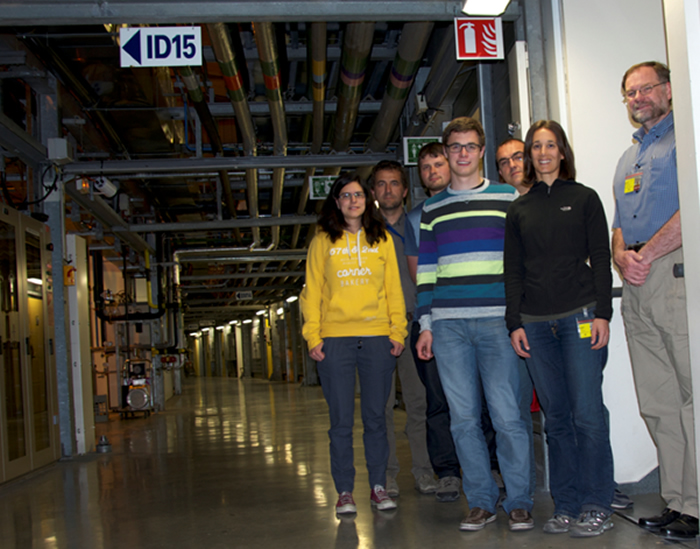Science & Technology - 2014
June
First Isotope-Specific Radiograph Using MEGa-rays Produced
LLNL and its partners from the Institute Laue Langevin (ILL) in Grenoble, France, the Technical University of Darmstadt in Germany, and the European Synchrotron Radiation Facility (ESRF) in Grenoble have conducted a series of experiments to validate the performance of the LLNL-patented Dual Isotope Notch Observation (DINO) detector system.
In a successful test of this Laboratory Directed Research and Development (LDRD)-developed technology, ESRF’s high-energy beamline and the DINO concept were used to assay and map the location of lithium-7 (7Li) in several objects through isotope-specific material detection.
Invented by NIF&PS Chief Technology Officer Chris Barty, DINO is based on gamma-ray excitation of nuclear resonance fluorescence (NRF). In the NRF process, an object is exposed to a continuous flux of gamma-ray photons whose energy has been tuned to the NRF absorption resonance in the isotope of interest. Excited by the gamma rays, the nucleus re-radiates high-energy, very-narrow-bandwidth photons. Because NRF energy levels depend on the exact nuclear structure of the emitter, NRF spectra are isotope specific.
 Members of the DINO validation team outside the ESRF ID15 beam area; LLNL Responsible Individual Félicie Albert and NIF&PS Chief Technology Officer Chris Barty are on the right.
Members of the DINO validation team outside the ESRF ID15 beam area; LLNL Responsible Individual Félicie Albert and NIF&PS Chief Technology Officer Chris Barty are on the right. ESRF’s ID15A beamline was used to simulate, at 478 keV (thousand electron volts), the output of future million-eV-class mono-energetic gamma-ray (MEGa-ray) light sources based on laser-Compton scattering, such as those being developed at LLNL. The six-day experimental campaign demonstrated, among other things, that:
- ESRF is an excellent surrogate for next-generation, high-flux, 0.1 percent bandwidth laser-Compton gamma-ray sources at energies below about 600 keV
- The DINO detector concept and related variations are valid and can provide rapid identification of concealed isotopic material
- DINO setups can be used to both assay and image the isotopic content of an arbitrary object.
- It is possible to precisely measure integrated nuclear fluorescence cross sections using DINO detector systems.
“This was an incredibly successful collaborative effort that puts LLNL and its collaborators once again in a leadership position with respect to defining the field of nuclear photonics,” Barty said. Added LLNL Responsible Individual Félicie Albert: “I was amazed at how quickly we found the 7Li NRF line. This happened within seconds, as opposed to several hours when we did the T-REX (Thomson-Radiated Extreme X-Ray) experiments at LLNL in 2008. None of this would have happened without the joint expertise of LLNL, ILL, Darmstadt University, and ESRF. This really shows the importance of further developing bright narrowband Compton scattering sources for nuclear detection and assay.”



